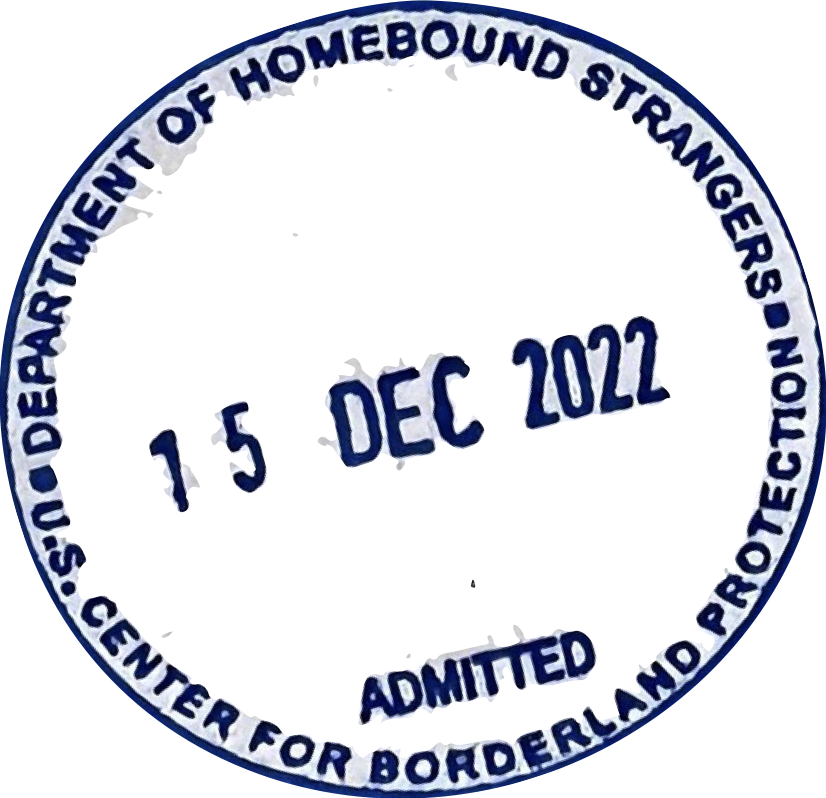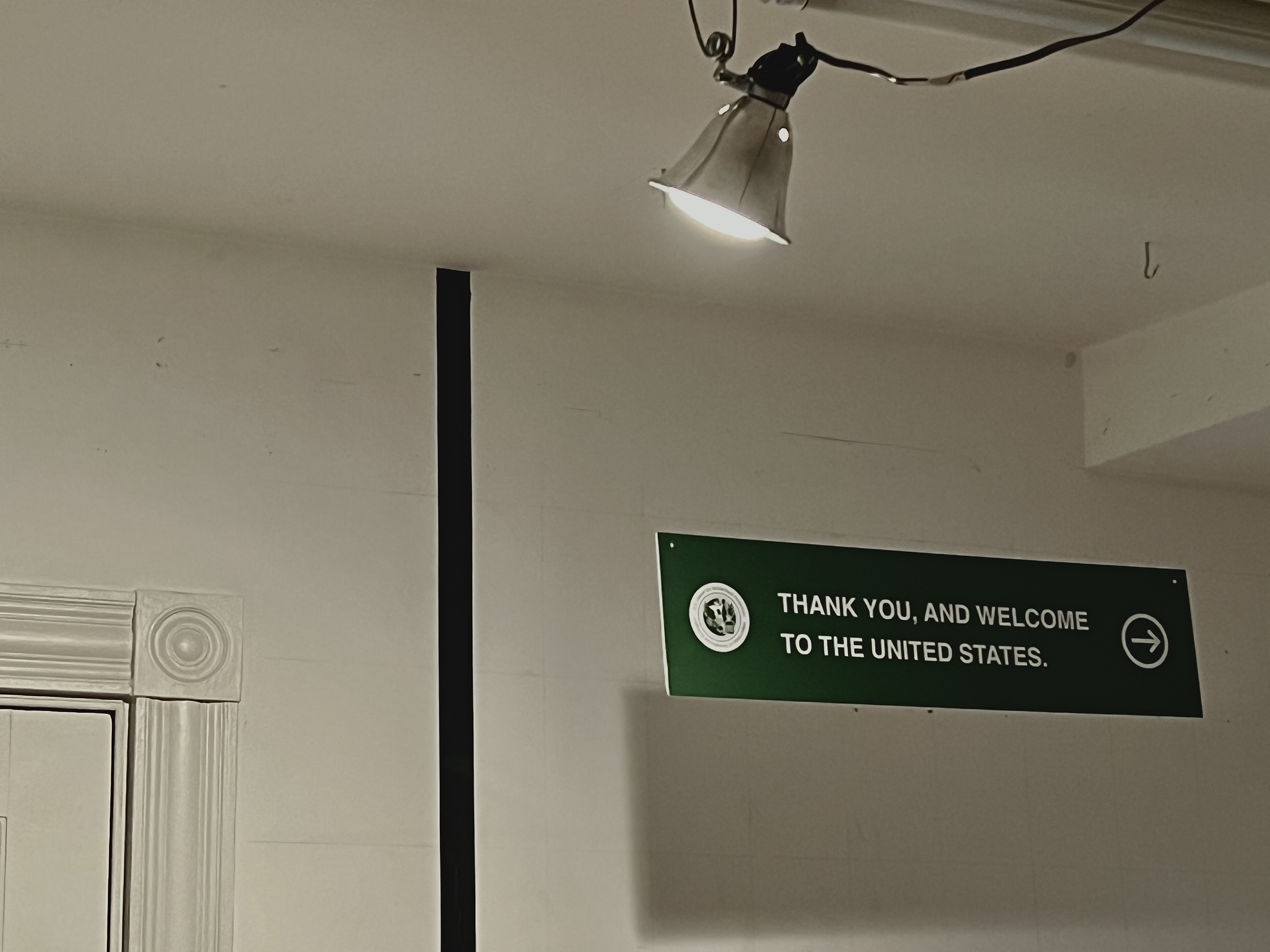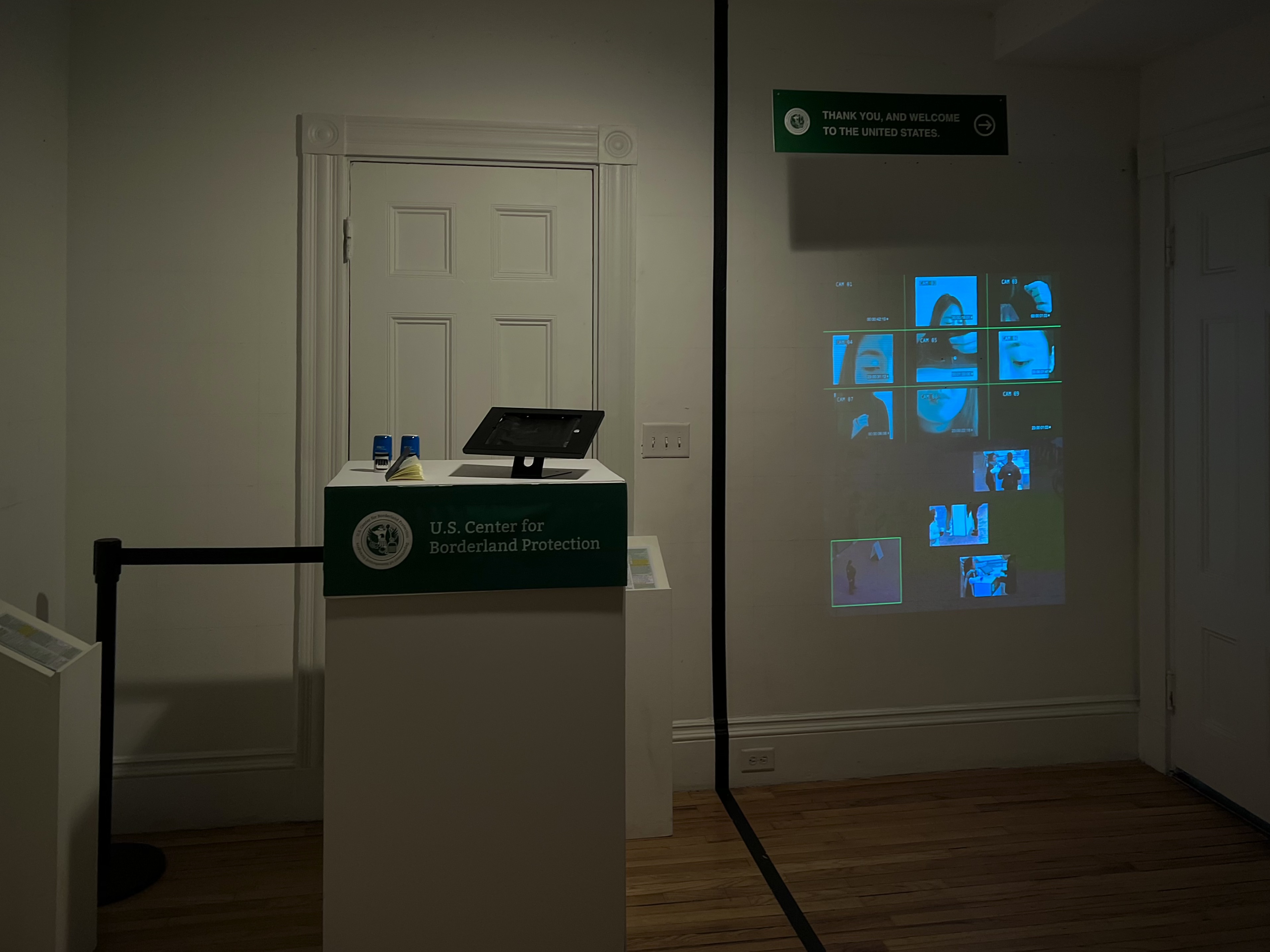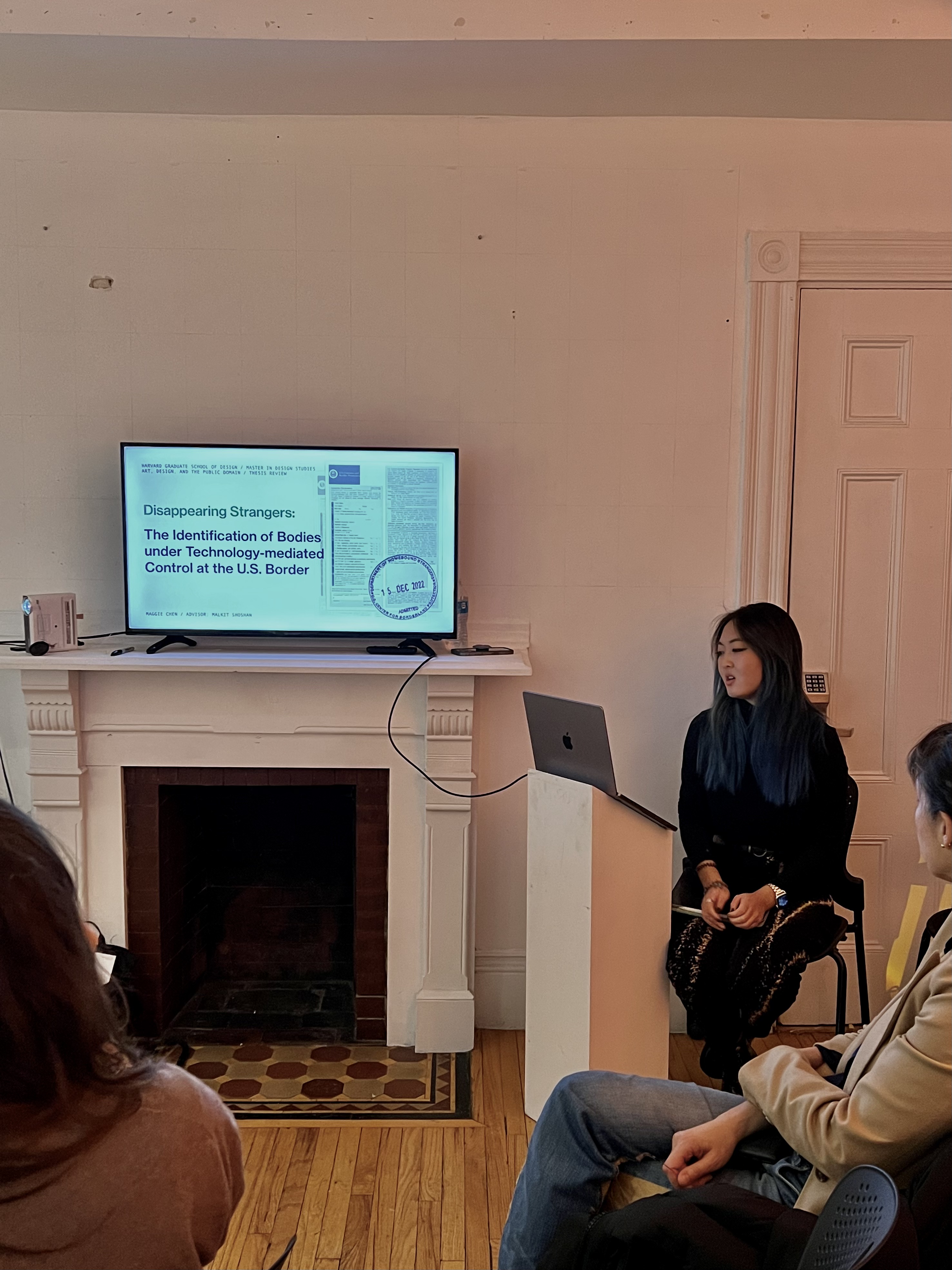
Disappearing Strangers:
The Identification of Bodies under Technology-mediated Control at the U.S. Border
What is it like for a stranger to be at the border?
Performance, multi-media installation, and archival research
Advisor & Mentors:
Malkit Shoshan
Dr. Leah Muse-Orlinoff
Dr. Juan Manuel Aldape Muñoz
KEYWORDS — Border, technology, identification, identity, bureaucracy, paperworks, media technology
Advisor & Mentors:
Malkit Shoshan
Dr. Leah Muse-Orlinoff
Dr. Juan Manuel Aldape Muñoz
KEYWORDS — Border, technology, identification, identity, bureaucracy, paperworks, media technology

abstract
How do personal identities interact with technologies deployed at borders to manage and filter mobility? How does the analog or digital nature of these technologies shape such interactions? A close analysis of the U.S. customs declaration form as a material manifestation of analog, low-automation technology and its development over the past two decades reveals federal institutions’ changing course of operation post 9/11 and shifting attitudes towards both non-citizens and citizens of the U.S. at its border. Drawing from theories and case studies from Sociology, Anthropology, Political Science, and Media theory, a part of this effort involves outlining what’s considered “technology” and what makes up a “border.”
This project sets off with a somewhat romantic characterization of Georg Simmel’s idea of a stranger that is rooted in freedom of personal mobility and identity. It then turns to the use of technology at the U.S.-Canadian border, where customs are stationed in international airports, and how it impacts people’s experience of entry – not just who they are, but also what they bring and under what circumstances they are entering. This is followed by a performance-based intervention that explores ways to tell personal narratives about being a Chinese-Canadian and Chinese at the U.S. border, inviting public participation in drawing a permeable border of who can enter and how.



